Mathematical Calculators
Matrix Transpose Calculator
This matrix transpose calculator helps you to find a transpose for any matrix.
Matrix transpose calculator
Table of contents
How to use matrix transpose calculator?
Our matrix transpose calculator is easy to use. Simply add column and row size and then input your matrix and press show result button!
What is a matrix transpose?
The transpose of a matrix is an operator that flips any matrix over its diagonal. For example, the transpose of a matrix with a dimension of [m X n] is a matrix with [n X m] dimension.

See the example below for a visual demonstration of how to transpose a matrix. Also, note that the dimension of the matrix remains the same size.
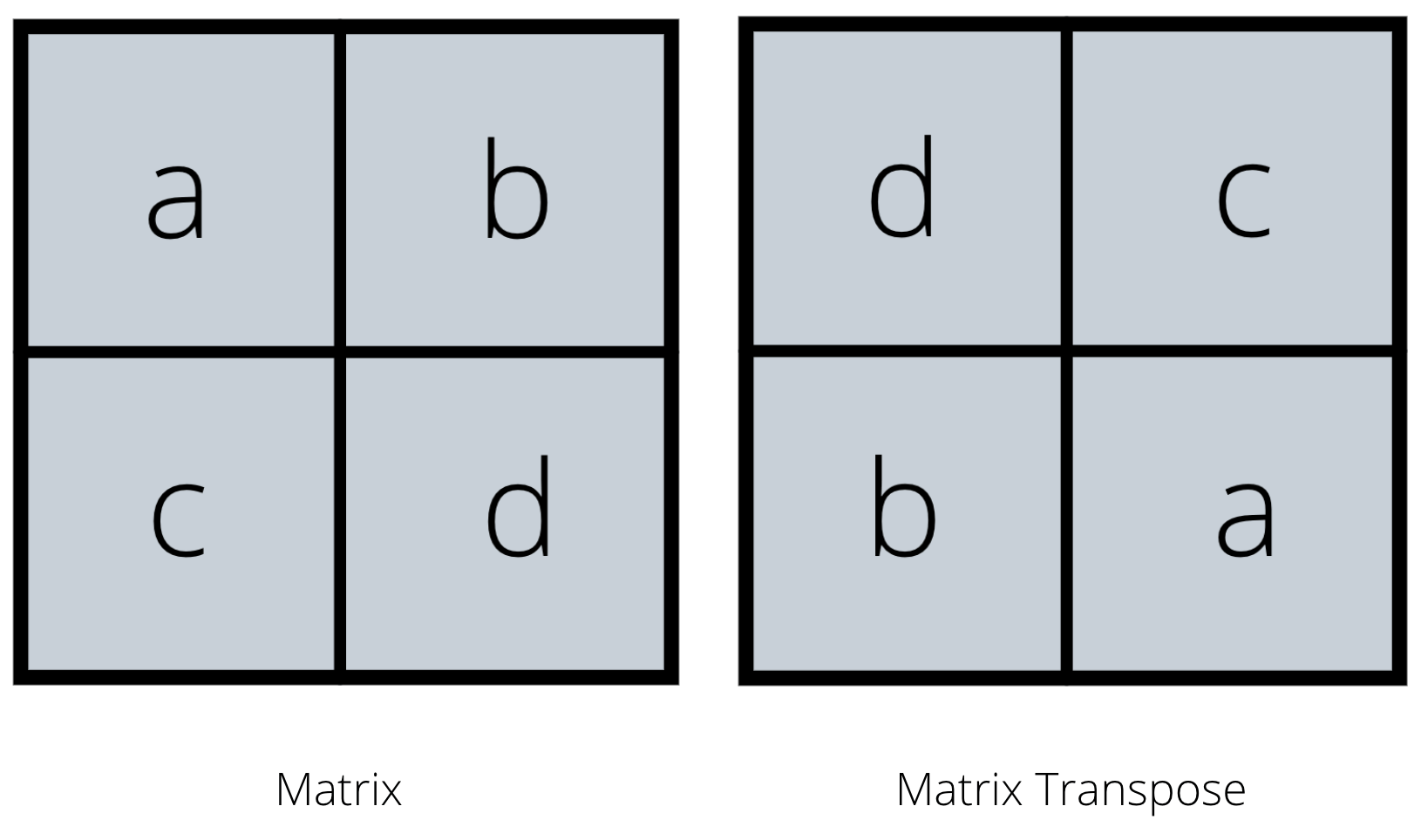
How to manually calculate a matrix transpose?
As shown in the example above, you only need to flip the matrix diagonally. It's as easy as that!
What is the matrix transpose used for?
Flipping a matrix might seem like a lame math quiz question, but the transpose is used for far more. Several formulas make use of the transpose and its functions. However, they might not benefit you as much unless you major in math or take a particular interest in matrices!
Properties of transposes
1) Transpose of a scalar multiple
If the transpose of a matrix is multiplied by a scalar (k), it is equivalent to the constant multiplied by the transpose of the matrix.
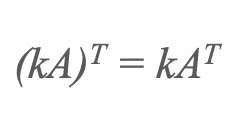
2) Transpose of a sum
The transpose of the sum of two matrices is equal to the sum of their transposes.

3) Transpose of a product
the transpose of two matrices is equal to the product of their transposes, but in reverse.
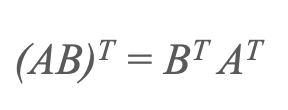
This is also true for more than two matrices.
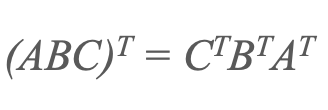
4) Transpose of the transpose
The transpose of a transpose of a matrix is the matrix itself.
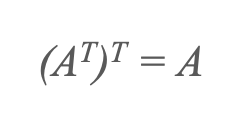
Different types of matrices
Here you will see the categorisation of matrices based on their size, or in mathematical terms, categorisation by _dimension_. Dimension refers to the size of matrix which is written as "rows x columns".
1) Row and column matrix
These are matrices with only one row or column, hence the name.
Example of a row matrix
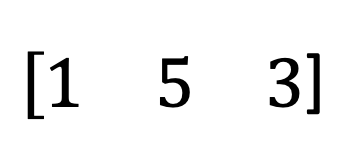
Example of a column matrix
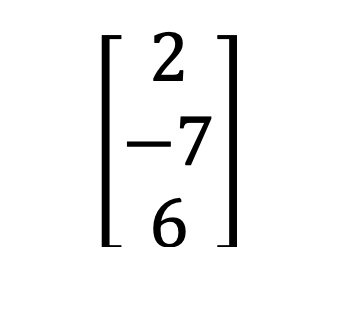
2) Rectangular & square matrix
If a matrix that does not have an equal number of rows and columns, it is called a rectangular matrix. On the other hand, if the matrix has an equal number of rows and columns, it is called a square matrix.
Example of a rectangular matrix
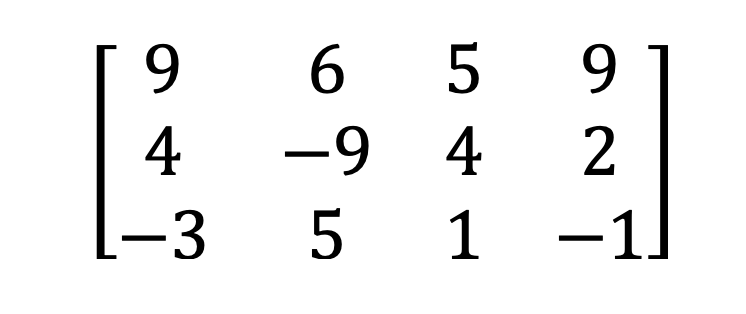
Example of a square matrix

3) Singular & non-singular matrix
A singular matrix is a square matrix whose determinant is 0, and if the determinant is not equal to 0, the matrix is called non-singular.
Example of a singular matrix
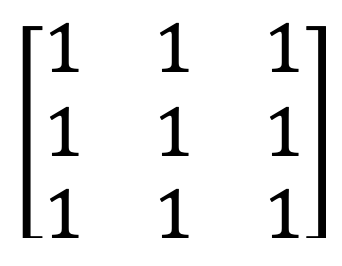
Example of a non-singular matrix
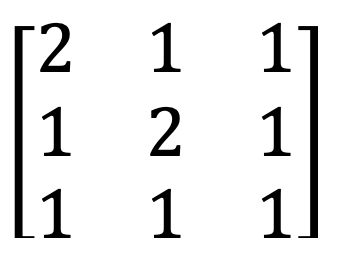
The next three matrices are all "Constant Matrices". These are so that all the elements are constants for any given dimension/size of the matrix.
4) Identity matrix
An identity matrix is also a square diagonal matrix. In this matrix all the entries on the main diagonal are equal to 1, and the rest of the elements are 0.
Example of an identity matrix
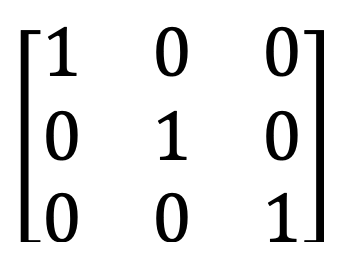
5) Matrix of ones
If all elements of a matrix are equal to 1, then this matrix is called a matrix of ones, as the name indicates.
Matrix of ones
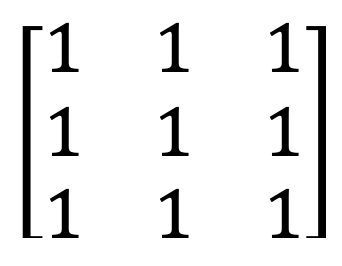
6) Zero matrix
If all the elements of a matrix are 0, then the matrix in question is a zero matrix.
Zero matrix
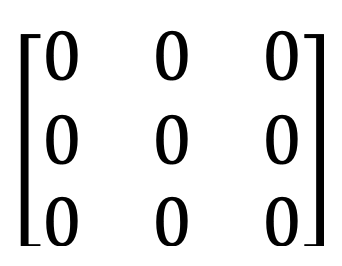
7) Diagonal matrix and scalar matrix
A diagonal matrix is a square matrix in which all the elements are 0 except for those elements that are in the diagonal.
Example of a diagonal matrix

On the other hand, a scalar matrix is a special type of square diagonal matrix, where all the diagonal elements are equal.
Example of a scalar matrix
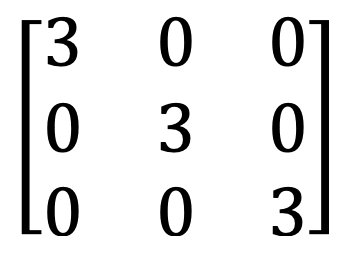
8)Upper & lower triangular matrix
An upper triangular matrix is a square matrix in which all the elements below the diagonal elements are 0.
Example of an upper triangular matrix
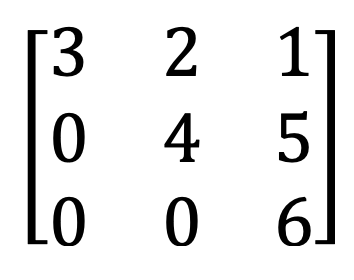
On the other hand, a lower triangular matrix is a square matrix in which all the elements above the diagonal elements are 0.
Example of a lower triangular matrix
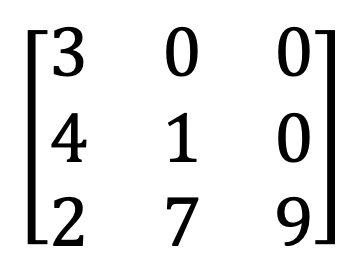
9) Symmetric and skew-symmetric matrix
A symmetric matrix is a square matrix that is equal to its transpose matrix. If the transpose of the matrix is equal to the negativised matrix, then the matrix is skew-symmetric.
Example of a symmetric matrix
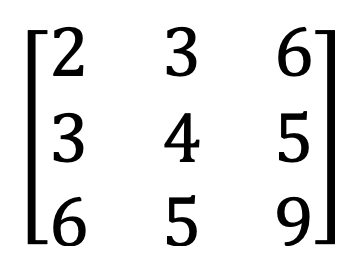
Inverse of the symmetric matrix

Example of a skew-symmetric matrix
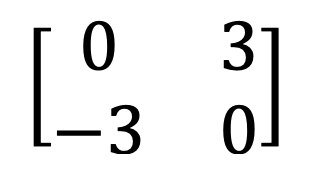
Inverse of the skew-symmetric matrix
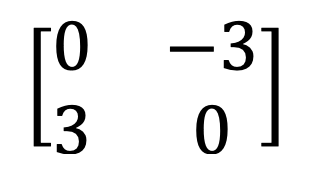
10) Boolean matrix
A boolean matrix is a matrix where its elements are either 1 or 0.
Example of a boolean matrix

11) Stochastic matrices
A square matrix is considered to be stochastic if all the elements are non-negative and the sum of the entries in each column is 1.
Example of a stochastic matrix
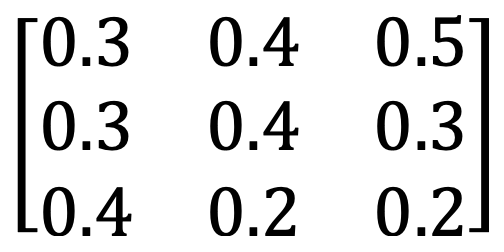
12) Orthogonal matrix
A square matrix is considered orthogonal if the multiplication of the matrix and its transpose is 1.
Example of a orthogonal matrix
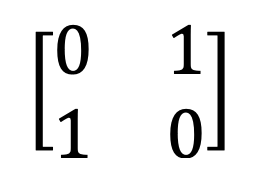
History of transpose
It wasn't till 1858 that the transpose of a matrix was introduced by a British mathematician named **_Arthur Cayley_**. Even though the word "Matrix" had already been introduced in 1850, Cayley was the first to introduce _the Matrix Theory_ and publish articles on the subject.
Article author
Parmis Kazemi
Parmis is a content creator who has a passion for writing and creating new things. She is also highly interested in tech and enjoys learning new things.
Matrix Transpose Calculator English
Published: Tue Oct 19 2021
In category Mathematical calculators
Add Matrix Transpose Calculator to your own website